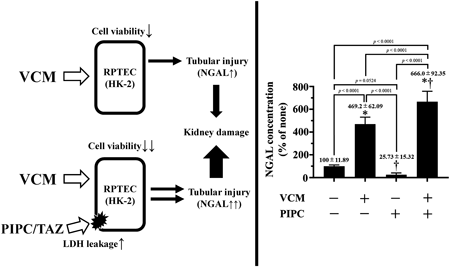- J-STAGE home
- /
- Biological and Pharmaceutical ...
- /
- Volume 48 (2025) Issue 4
- /
- Article overview
-
Shingo Takada
Department of Clinical Pharmacy, Graduate School of Pharmaceutical Sciences, Hokkaido University of Science, 15–4–1 Maeda 7, Teine-ku, Sapporo 006–8585, Japan
-
Yuya Takashima
Department of Pharmacotherapy, Faculty of Pharmaceutical Sciences, Hokkaido University of Science, 15–4–1 Maeda 7, Teine-ku, Sapporo 006–8585, Japan
-
Riku Shinozaki
Department of Pharmacotherapy, Faculty of Pharmaceutical Sciences, Hokkaido University of Science, 15–4–1 Maeda 7, Teine-ku, Sapporo 006–8585, Japan
-
Mizuki Nishisato
Department of Pharmacotherapy, Faculty of Pharmaceutical Sciences, Hokkaido University of Science, 15–4–1 Maeda 7, Teine-ku, Sapporo 006–8585, Japan
-
Natsuko Takahashi-Suzuki
Department of Pharmaceutics, Faculty of Pharmaceutical Sciences, Hokkaido University of Science, 15–4–1 Maeda 7, Teine-ku, Sapporo 006–8585, Japan
-
Akira Takaguri
Department of Pharmacology, Faculty of Pharmaceutical Sciences, Hokkaido University of Science, 15–4–1 Maeda 7, Teine-ku, Sapporo 006–8585, Japan
-
Takehiro Yamada
Corresponding author
Department of Clinical Pharmacy, Graduate School of Pharmaceutical Sciences, Hokkaido University of Science, 15–4–1 Maeda 7, Teine-ku, Sapporo 006–8585, Japan Department of Pharmacotherapy, Faculty of Pharmaceutical Sciences, Hokkaido University of Science, 15–4–1 Maeda 7, Teine-ku, Sapporo 006–8585, Japan
Supplementary material
2025 Volume 48 Issue 4 Pages 363-371
- Published: April 12, 2025 Received: October 28, 2024 Released on J-STAGE: April 12, 2025 Accepted: February 19, 2025 Advance online publication: - Revised: -
(compatible with EndNote, Reference Manager, ProCite, RefWorks)
(compatible with BibDesk, LaTeX)


